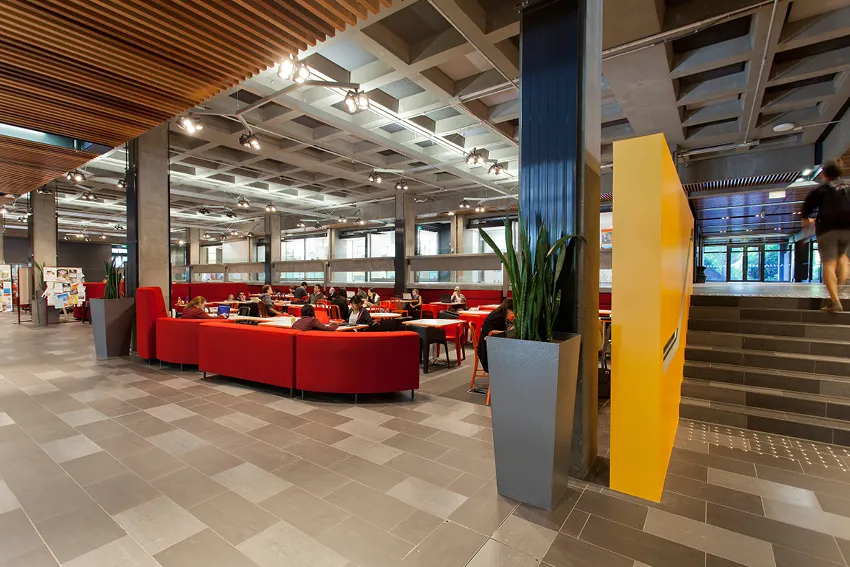NewsPerspectives
Sticky Campus


Two projects were the Temporary Events Centre to replace the damaged USCA Building and construct the Puaka James Hight, which provided a new student hub. Both have become central elements of university life.
“Part of the challenge was designing spaces that students wanted to be in. Providing a comfortable environment with a variety of different types of seating for relaxation, social interaction, group learning, eating or study become essential tools. It is about learning outside the classroom. We’ve created areas for peer-to-peer learning, so students can get together, rather than try to learn in isolation,” says Graeme. “It was about crafting opportunities for students to come together, study and socialise. It forms a fuller university experience.”

CASE STUDY: OPEN UP - WAIKATO STUDENT CENTRE
Many universities struggle with the architectural vestiges of another time. Waikato University’s old library was one of these buildings. Inwardly focused and outwardly intimidating, this Brutalist concrete edifice did little to engage with the campus.
Open, approachable and inviting learning environments have become crucial to new learning styles; so the University of Waikato briefed Warren and Mahoney to rework this building. It was to become a central beacon for the campus, connecting students and the community.
The Student Centre is a refurbishment of and extension to the existing library. It’s designed as a place for people to study, to create opportunities for peer-to-peer learning outside of traditional teaching spaces.
Built structures meet open spaces. Students can migrate freely across the entire site, moving through the campus without barriers. There are cross-over spaces between the re-invented library with an information commons and café spaces.
The building is acutely aware of its surroundings. Its shape follows the contours of the landscape, as one sinuous container for student activity. It was the second education building in New Zealand to be awarded a 5 Green star rating. The building echoes the University’s ethos: it integrates learning and living seamlessly. It forms the geographic, intellectual and spiritual heart of the campus.

